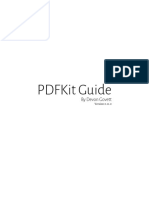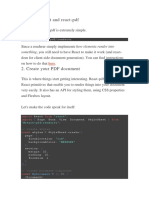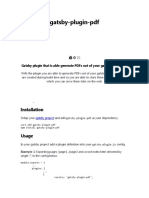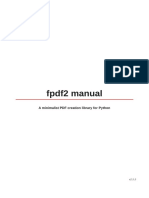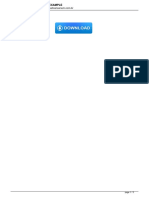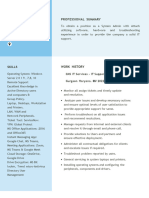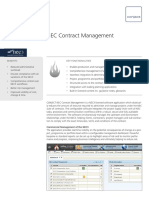0% found this document useful (0 votes)
33 views4 pagesGenerating A PDF
This document provides instructions for generating PDF files using Playwright, specifically utilizing the page.pdf() command. It details options for customizing the appearance of the PDF, including print background settings and custom headers and footers. Additionally, it highlights the capability to create high-quality PDFs from existing HTML and CSS, potentially replacing tools like LaTeX.
Uploaded by
vreena3Copyright
© © All Rights Reserved
We take content rights seriously. If you suspect this is your content, claim it here.
Available Formats
Download as DOCX, PDF, TXT or read online on Scribd
0% found this document useful (0 votes)
33 views4 pagesGenerating A PDF
This document provides instructions for generating PDF files using Playwright, specifically utilizing the page.pdf() command. It details options for customizing the appearance of the PDF, including print background settings and custom headers and footers. Additionally, it highlights the capability to create high-quality PDFs from existing HTML and CSS, potentially replacing tools like LaTeX.
Uploaded by
vreena3Copyright
© © All Rights Reserved
We take content rights seriously. If you suspect this is your content, claim it here.
Available Formats
Download as DOCX, PDF, TXT or read online on Scribd
/ 4





